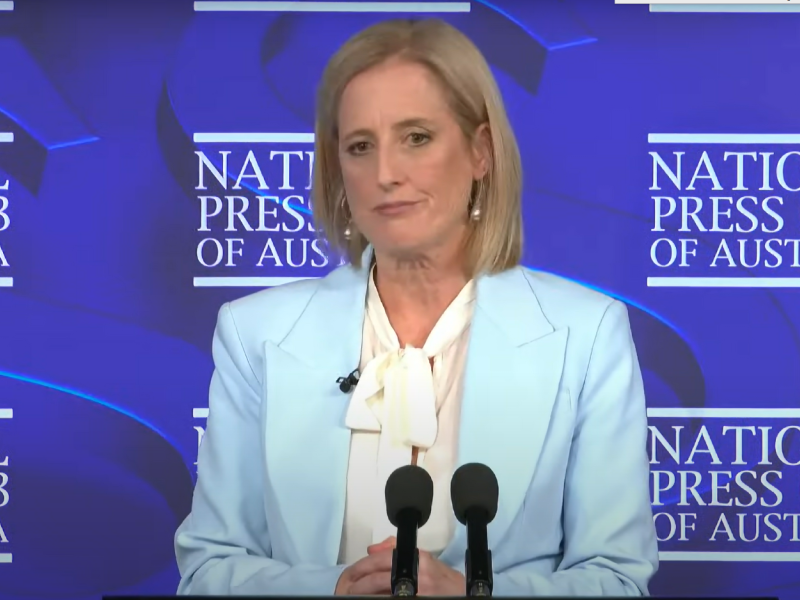Large businesses that miss gender equality targets will soon be barred from winning government work, as the Albanese government seeks to improve the equity of its suppliers and emerging industries in a new national gender equality strategy.
The ‘Working for Women’ strategy was released by Minister for Women and for Finance Katy Gallagher at the National Press Club on Thursday.
It brings a new requirement for government suppliers with at least 500 employees to achieve progress against Gender Equality Indicators rather than just commit to them.
“My experience is companies work with us, they want government work,” Senator Gallagher said.
“They want to work with government and so this, I think, puts more responsibilities on them. But I don’t think it’s one they will shrug or walk away from.”

Organisations with 100 or more employees in Australia already need to report annually against six Gender Equality Indicators.
Organisations 500 or more employees have also been required to have formal plans or policies to progress against them since April last year.
According to the new strategy, the large suppliers will need to “commit to — and achieve — workplace targets” against at least three of the targets “in order to win government work”.
Senator Gallagher said the government’s Workplace Gender Equality Agency is consulting on the specific targets. But they “will focus on the gender makeup of their boards and the workforce; equal pay; flexible working arrangements; workplace consultation on gender equality; and efforts to prevent and address sexual harassment”.
It could be challenging for the government’s tech suppliers after data from the Workplace Gender Equality Agency released last month found that STEM and tech related sectors had gender pay gaps above the national median.
A new voluntary supplier register of women-owned or -led businesses will also be instituted through AusTender to highlight the firms and track their share of government contracts.
The procurement push comes as part of a new ‘Working for Women’ strategy that includes a focus on women getting “a fair crack at opportunities that will come with growth industries like clean energy and cybersecurity”, Ms Gallagher said.
It also builds on the federal government’s ‘10-year-plan to unleash the full capacity and contribution of women to the Australian economy’, which flagged that government purchasing power would be used to incentivise workplace gender equality.
Calling out innovative tech industries on Thursday, Senator Gallagher stressed that “we can’t let what’s happened in other segregated industries happen in the new ones” within the Industry and Science and the Climate Change and Energy portfolios.
“We have to make sure that these new industries don’t develop and grow and women are still right at the back because nobody’s thought about how to make sure that they’re part of these jobs of the future,” Ms Gallagher said.
According to the STEM equity monitor, compiled by the Department of Industry, Science, and Resources, the proportion of women in STEM qualified occupations grew by three percentage points from 19 per cent to 22 per cent over the decade to 2022.
An independent panel review on ‘Pathways to Diversity in STEM’ released its final report last month, more than a year after it was commissioned by Mr Husic, but the government has yet to formally respond. The report considered gender equality alongside support for other historically underrepresented groups.
During her press club address, Ms Gallagher described the strategy as outlining the government’s “side of the bargain, and how we’ll priorities our effort”.
“And this strategy is an invitation – to work with us. Because gender equality benefits everyone and everyone is responsible for bringing about change.”
Do you know more? Contact James Riley via Email.

